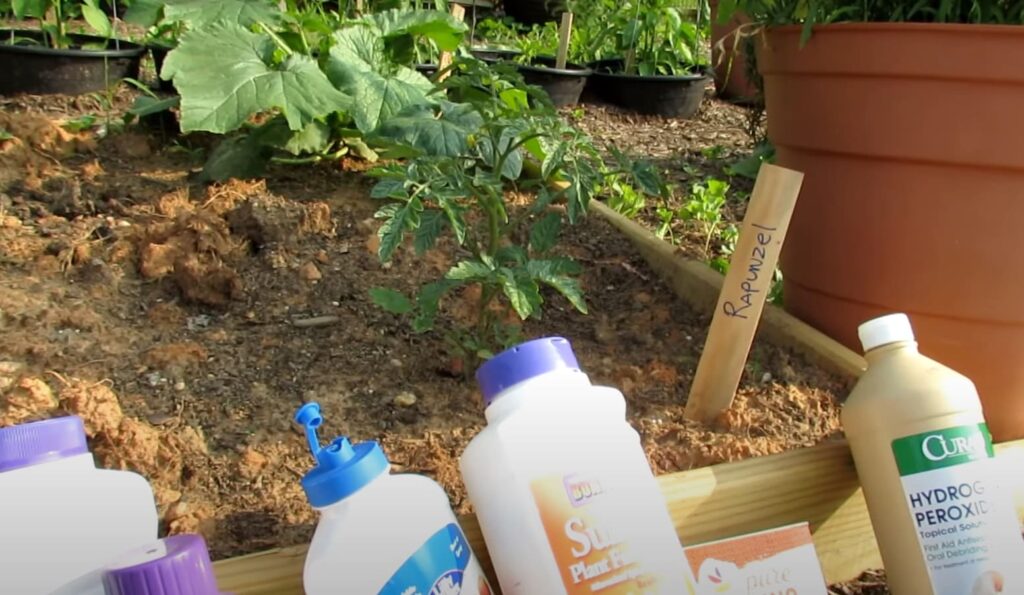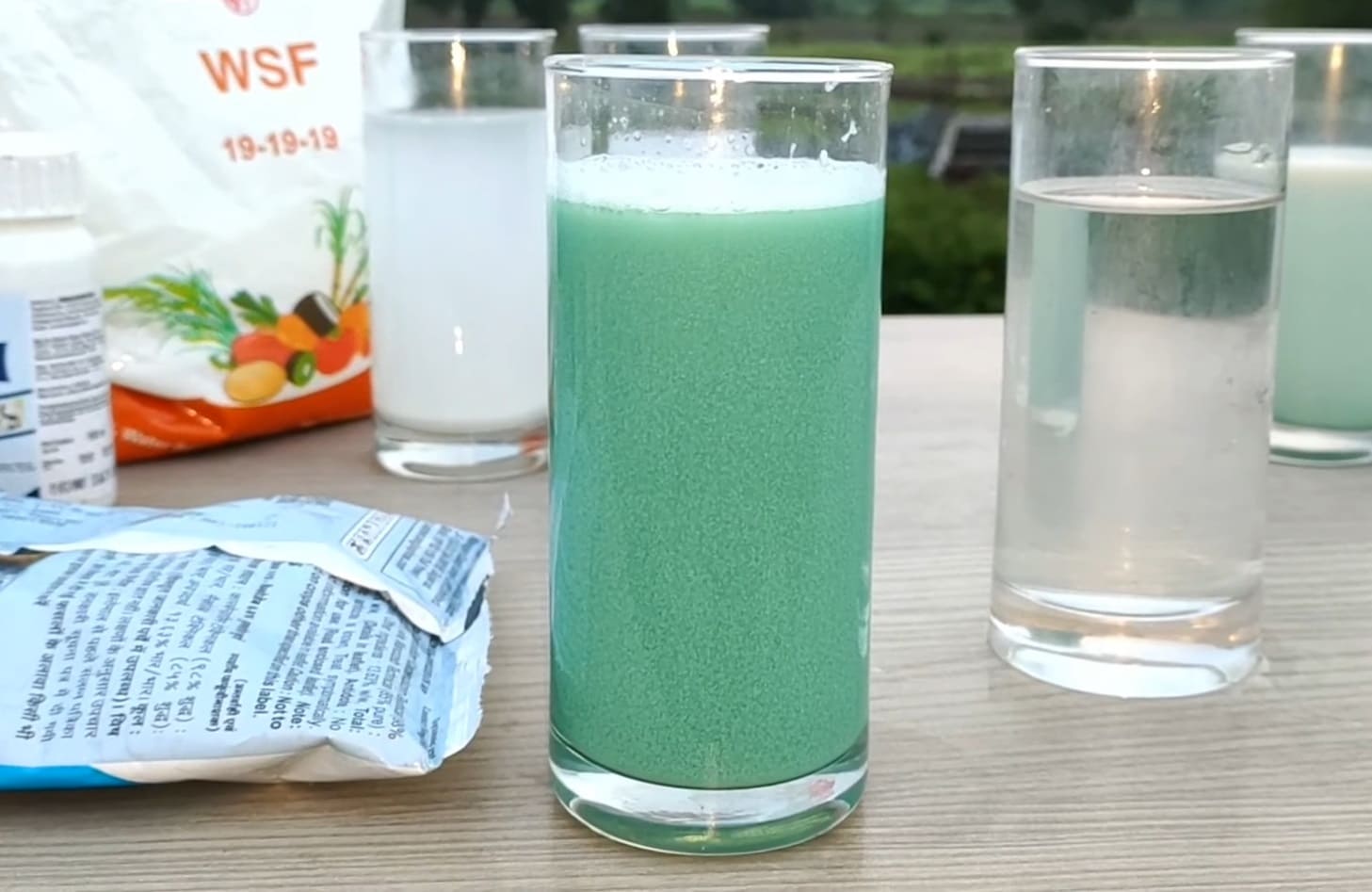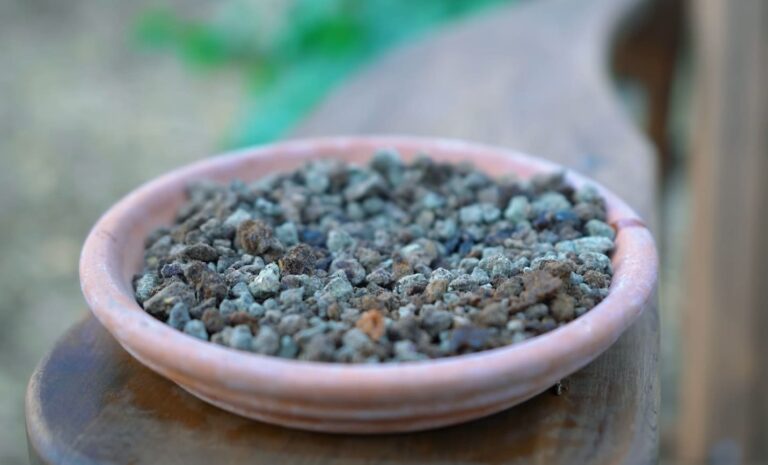Can You Mix Fungicide With Fertilizer?
Applying fungicide and fertilizer is an efficient way to care for your lawn or garden. However, these products have different purposes, and mixing them can reduce their effectiveness. While fertilizer provides nutrients to help plants grow, fungicide targets fungal diseases. Combining the two may alter the delivery or potency of active ingredients. There are also concerns that certain fungicides could injure beneficial microorganisms promoted by some fertilizers. Getting the most out of both requires understanding how they work independently and interact. This article explores the compatibility of mixing fungicides and fertilizers and offers guidance on best application practices for your unique situation.
In a Nutshell
Whether you can mix fungicide and fertilizer depends on the specific products. Some fungicides and fertilizers are compatible and can be integrated, while others may interact negatively. Always check the product labels before mixing – they will indicate if the products can be safely combined. When in doubt, apply them separately, waiting at least two weeks between applications. Mixing certain fungicides with fertilizers containing living organisms like mycorrhizae can kill beneficial microbes. Test mixing on a small area first to ensure no phytotoxicity. With care in selection and timing, you can get the benefits of both fungicide and fertilizer without compromising results.

Can You Mix Fungicide With Fertilizer?
When caring for plants or turfgrass, it’s common to need both fungicides to treat diseases and fertilizers to nourish growth. This leads some to wonder if they can combine fungicide and fertilizer in one application. There are some potential benefits but also risks to be aware of.
Why People May Want to Mix Them
There are a few reasons why mixing fungicide and fertilizer seems appealing:
- Saves time and labor – Combining both products in one pass is more efficient than making separate applications. This reduces workloads and fuel/energy use.
- Maximizes adherence and uptake – Mixing a systemic fungicide with a foliar fertilizer can allow joint uptake and utilize the fertilizer as a sticking agent for the fungicide.
- Lowers total costs – Buying pre-mixed combination products or making batches on-farm can decrease input costs associated with multiple applications.
- Enhances disease resistance – Some foliar nutrients have been shown to improve plant defenses and may add protective effects when applied with fungicides.
Potential Benefits and Risks of Mixing
While mixing fungicide and fertilizer can provide the above benefits in some instances, there are also some potential downsides:
- Incompatibility – Many fungicides and fertilizers are incompatible due to chemical interactions that reduce efficacy. Mixing them can limit the performance of one or both products.
- Phytotoxicity – Even if active ingredients don’t directly interact, mixed applications can sometimes damage plants by altering the uptake and metabolism of chemicals.
- Microbial impacts – Some fungicides are very harmful to beneficial microbes added to organic fertilizers and can undermine soil health when mixed.
- Wasted product – Incompatible mixtures essentially waste the fungicide and fertilizer without providing the intended results.
- Environmental issues – If a mixed application fails to adhere, uptake, or perform as expected, it can lead to excess runoff and pollution risks.
Proper Mixing Guidelines
If you determine that mixing a fungicide and fertilizer together is warranted, it’s essential to follow proper guidelines to create a compelling tank mix or combined application. Carefully managing the mixing process and application can help mitigate, though not eliminate, the potential compatibility risks.
Consult Labels
This is the most critical rule when considering mixing fungicide and fertilizer:
Never mix or apply any fungicide and fertilizer combination unless both product labels explicitly state it is allowed. Look closely for any warnings or restrictions on the labels regarding mixing or combined use with other chemicals. A fungicide and fertilizer may appear to be compatible based on active ingredients, formula, or other factors, but ultimately, the labels provide the definitive guidance. Do not go against label instructions.

Check With Local Experts
Before mixing, it is wise to confirm with research-based local experts that the specific fungicide and fertilizer products you plan to incorporate are recommended and proven compatible with your region and crop. University cooperative extension agents, state agricultural department specialists, independent crop advisors, and certified pest control advisors can all provide guidance based on up-to-date field trial results and observations in your area.
Test First
Once label compatibility is confirmed and local expert recommendations support mixing for the products in question, conduct a jar test by mixing a small batch of the proportions you plan to use. Then, apply the test mix to a limited area of the lawn or field to check for any phytotoxic response. If no issues appear after 3 to 5 days, you can feel more confident in preparing and applying full-scale tank mixes.
Maintain Agitation
It is critical to keep tank mixes agitating or flowing to avoid separation, settling, or uneven application. Constant agitation while mixing, loading, and applying is vital. For spreads, maintain a steady flow and spread pattern.
Follow All Label Precautions
Carefully adhere to all label directions for both products regarding proper personal protective equipment, re-entry intervals, application restrictions, maximum seasonal dosage, pre-harvest intervals, etc. Using the total labeled rates for both products is not always advisable – follow expert guidance on any rate reductions needed in mixes.
Consider Alternatives
If labels prohibit mixing, experts caution against it, or field testing shows concerns, consider alternative approaches. Applying the products separately, alternating applications, or exploring integrated pest and nutrition management options are often preferable to problematic tank mixing.
While following all guidelines can help mitigate risks, the best guarantee of performance and safety when using both fungicide and fertilizer is to apply them separately. If tank mixing, proceed with caution and vigilance.
With care and caution in product selection, timing, mixing, and application, fungicides and fertilizers can be used together where compatibility and performance are confirmed. But following labels and erring on the side of caution is critical to avoiding any issues from mixing.

Alternatives to Mixing Fungicide With Fertilizer
While mixing fungicide and fertilizer together may seem convenient, compatibility issues often make applying them separately a better option. This allows you to gain the benefits of both products without negative interactions.
Applying Fungicide and Fertilizer Separately
Applying fungicide and fertilizer in separate operations can be an effective strategy to deliver the benefits of both while avoiding potential compatibility issues from mixing.
Alternating Applications
One approach is alternating applications – applying the fungicide first, followed by the fertilizer 2-4 weeks later. The fungicide has time to work before the fertilizer stimulates new plant growth fully. Alternating at different times over the season is also an option.
For example, you could apply a contact fungicide prior to wet periods in the spring, then follow with a fertilizer application once the disease threat passes. Later, a systemic fungicide could be applied mid-season, alternating with fertilizer again after 2-4 weeks.
Proper sequencing and timing are crucial with alternating applications to ensure the fungicide can act without interference and contact is minimized.

Split Applications
Another approach is splitting the total application rates into multiple smaller applications of both fungicide and fertilizer. This limits the amount mixed or co-applied at once.
For instance, you might make two separate fungicide-fertilizer applications spaced two weeks apart, using half the label rate of each product per application. This can provide benefits of both over time while restricting exposure.
Targeted Applications
When disease pressure is limited to isolated areas, you can spot-treat only affected zones with the fungicide, then apply fertilizer broadly.
For example, if anthracnose is only impacting your shaded trees, treat those trees with fungicide, leaving sunny areas for fertilizer-only application later on. This selective treatment reduces overall fungicide use.
Partial Mixing
One option is to mix some of both products separately and apply them to different areas. For example, you could treat half the lawn or field with just fungicide and the other half with just fertilizer.
This allows some efficiency of single passes while preventing interaction in the tank or on any given plant.
Layering
Finally, entirely separate passes with each product prevent any mixing. Make one application layering on just the fungicide, then come back separately for a fertilizer-only application.
Applying fungicide and fertilizer separately does take more planning and time than mixing, but it often provides the best results by keeping both products at full effect and avoiding any compatibility issues.

Proper Sequence and Timing
When applying fungicide and fertilizer separately, follow this sequence:
- Fungicide first – Always apply the fungicide before the fertilizer. This allows the fungicide time to act without interference.
- 2-4 week minimum spacing – Wait at least 2-4 weeks between the fungicide and subsequent fertilizer applications.
- No overlaps – Avoid overlaps by clearly tracking and marking areas already treated.
- Follow all label directions – Adhere to label precautions for intervals between applications, crop plant-backs, grazing restrictions, etc.
Benefits of Separate Applications
Applying fungicide and fertilizer separately offers these advantages:
- Avoids incompatibility issues – Prevents possible interactions that could reduce efficacy.
- Prevents plant damage – Lessens risk of phytotoxicity from chemicals interacting.
- Maintains microbial health – Doesn’t harm beneficial microbes in organic fertilizers like mixing can.
- Maximizes results – Allows each product to perform and deliver intended benefits fully.
- Reduces waste – No wasted product from neutralized or precipitated actives.
- Lowers resistance risk – Applying fungicides alone provides better disease control to avoid resistance.
- More flexibility – Allows the use of different products to match crop needs at different times.
- Backup option if issues – Separate applications provide a fallback plan if mixing problems occur.
With proper timing, placement, and sequencing, applying fungicide and fertilizer separately can maximize the effectiveness of both products compared to attempting to mix them together.
FAQ
What are the potential risks of mixing fungicides and fertilizers?
Mixing fungicides and fertilizers does carry some risks. Certain active ingredients or formulations may interact and reduce the effectiveness of either the fungicide, fertilizer, or both. For example, some fungicides are deactivated by alkaline chemicals like lime, which are present in many fertilizers. Mixing can also alter the release rate or availability of key ingredients. There is particular concern about mixing fungicides with organic or living fertilizers containing beneficial microbes. Many fungicides are designed to inhibit fungal growth but can also inadvertently impact helpful bacteria and mycorrhizae fungi found in organic fertilizers. Always check product labels for warnings about compatibility before mixing. When in doubt, apply the fungicide and fertilizer separately to avoid any negative interactions.
When is it safe to mix fungicides and fertilizers?
It is generally safe to mix fungicides and fertilizers when the product labels state it is allowed. Certain active ingredients and formulations are designed to be compatible. For example, phosphite fungicides can often be mixed with liquid fertilizers or applied as a foliar spray along with dissolved granular fertilizers. Some pre-mixed combination products, like systemic fungicides formulated with a balanced fertilizer solution, are also available. Always confirm before mixing that there are no warnings or restrictions for the specific fungicide and fertilizer products you plan to use together. Start with a small test area to check for phytotoxicity or reduced performance.
How should fungicides and fertilizers be applied separately?
If fungicides and fertilizers are incompatible or you choose not to mix them, they can be applied separately. Applying the fungicide first and allowing 2-4 weeks before applying the fertilizer is generally recommended. This spacing gives the fungicide time to work without interference while still providing fertilization benefits. When dealing with a disease outbreak, getting the fungicide applied and active is the priority before focusing on new growth with fertilizer. For preventative fungicide treatments, apply early in the season and fertilize later on. Always cover the recommended treatment area for both the fungicide and fertilizer when using separately. Following label directions for each product will provide the intended results.
What application precautions should I take with tank mixes or separate applications?
If you mix a compatible fungicide and fertilizer, agitate the tank mix well before and during application. When applying separately, thoroughly clean spray equipment between applications to remove residue. Avoid overlaps when applying the fungicide and fertilizer separately by marking treated areas and maintaining accurate records. Excessive fungicide or fertilizer application can damage plants. Always follow label directions for pre-harvest intervals, re-entry intervals, and grazing restrictions when applying either product near harvest. Make a note of any plant-back limits for the following crops. Taking appropriate precautions will maximize the safe and effective use of fungicides and fertilizers together or separately.
Can I mix systemic acquired resistance (SAR) inducers with fertilizers?
SAR inducers, also called plant activators, work differently than conventional fungicides and are often safer to mix with fertilizers. These specialized products stimulate a plant’s natural defense systems against fungal diseases. Many SAR inducers contain living microbes like Bacillus spp. Bacteria or benefit from association with mycorrhizae fungi. These can be compatible with organic fertilizers containing similar beneficial microbes. Some bacterially-derived inducers are even mixed with low doses of nutrients to feed the plant and microbes. Check labels for verification, but SAR products are less likely to interact with fertilizers negatively. Mixing or separate applications can provide crop resistance along with growth benefits. Always test initially for compatibility and performance.
Should I mix micronutrient products containing copper or zinc with fertilizers?
Fungicidal mineral micronutrient products containing high doses of copper, zinc, manganese, or other metals should generally not be mixed directly with fertilizers. The metals may interact with compounds in the fertilizer. Very low-dose micronutrient mixes are sometimes compatible. It is often advised to avoid applying micronutrient metals within 15-30 days of phosphorous fertilizer applications. The phosphorous can limit micronutrient availability and uptake when applied closely together. Follow all label precautions when using micronutrient fungicides containing copper, zinc, or other metals that may interact with fertilizer compounds.
Related Video: 4 Common Mistakes Made When Managing Fungal Diseases in the Garden: Overview of 6 Basic Fungicides
Final Thoughts
When applying both fungicide and fertilizer to your plants or lawn, it’s best to use caution and check labels before mixing products. While some combinations may be effective, others can reduce performance or cause plant damage. Test mixing on a small scale first. Apply the effects separately if needed, allowing enough time between applications for the first to act. Seek professional guidance to match compatible fungicides and fertilizers to your specific needs. With intelligent planning and diligent monitoring, you can safely gain the fungal disease control of quality fungicides and the growth benefits of fertilizer applications. Achieving both goals is possible with care and the right products.







